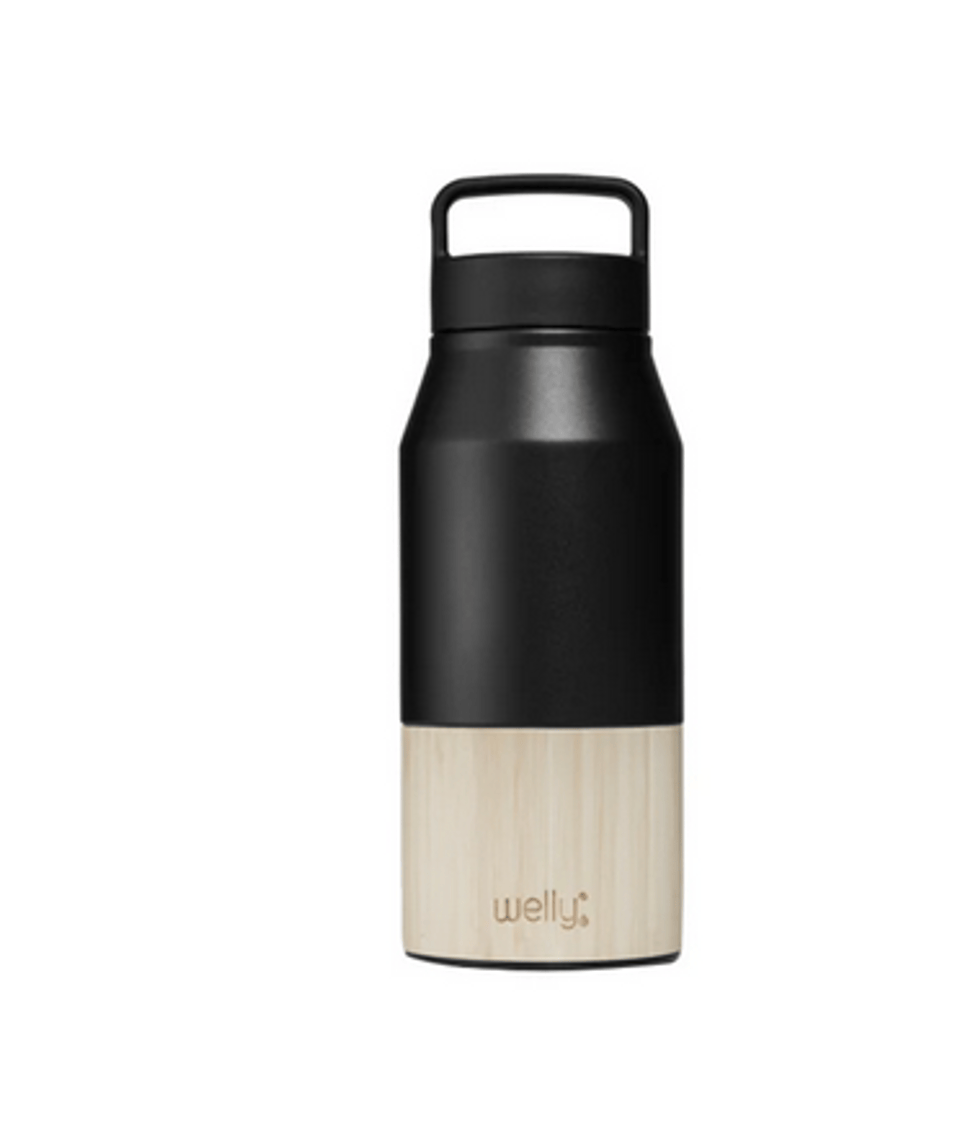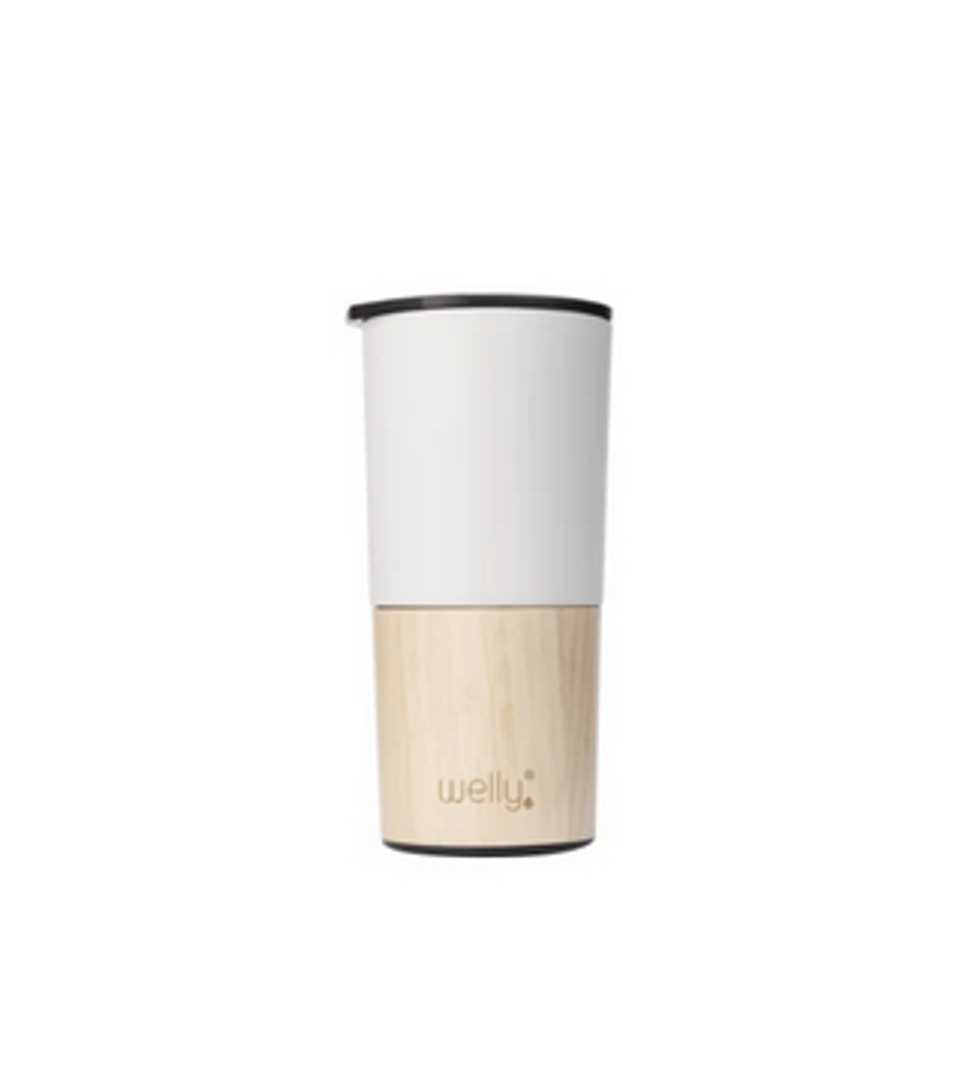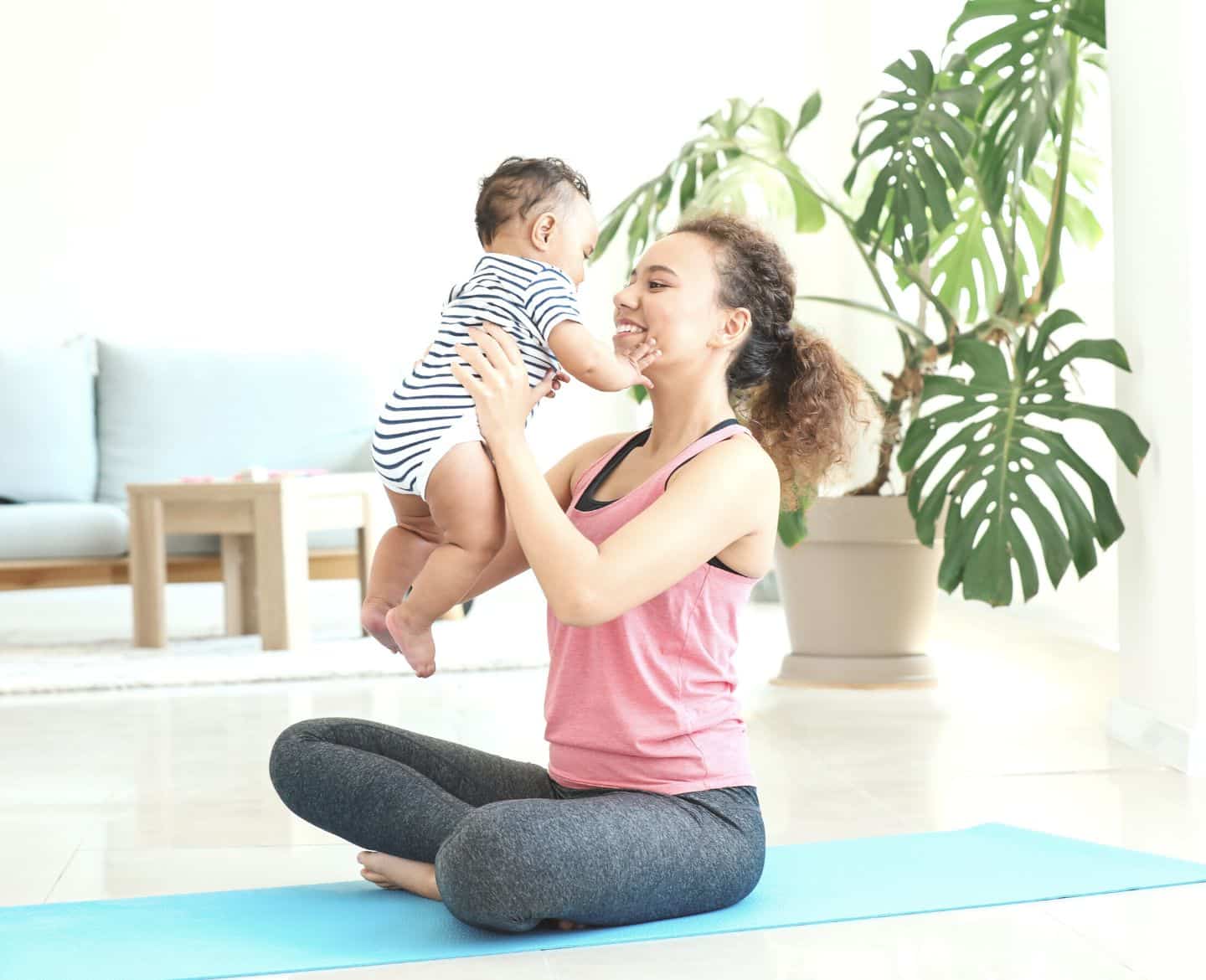Is it safe to exercise with a face mask on? What to know, mama

A doctor and physical therapist weigh in.
Table of Contents
- What happens to your body when you exercise with a face mask on?
- How long should you wear a mask while exercising?
- What type of masks are best to wear when exercising?
- Can wearing a damp mask impact your safety?
- Here's how to avoid a sweaty mask:
- Be sure to bring these water bottles with you while exercising:
At some point gyms and fitness centers will re-open, and when they do, it will beg the question: should we wear masks while exercising? Even if you’re not a fan of gyms—or you’re too busy with your kids so you prefer to jog around your neighborhood—is it still important to cover your face while working out?
To be clear, the World Health Organization (WHO) says people shouldn’t wear masks while exercising because it may limit one’s ability to breathe easily. But, if the thought of not wearing a mask worries you and you want to follow The Centers for Disease Control and Prevention’s recommendation to wear a mask in public, there are ways to do it safely.
We asked Jaclyn Fulop, a board licensed physical therapist and owner of Exchange Physical Therapy Group and Dr. Bita Nasseri, a renowned physician for over 20 years trained at the Mayo Clinic to share exactly what we need to know:
What happens to your body when you exercise with a face mask on?
Heavy breathing while exercising is common even without a face mask. To this end, wearing a face mask may further compromise the efficacy of breathing and potentially drop your oxygen levels. Additionally, rebreathing exhaled gases is at much higher concentration while wearing a face mask, and that’s not exactly a good thing.
“We exhale to get rid of toxic buildup of gases,” says Dr. Nasseri. “Excess levels of carbon dioxide, dropped levels of oxygen, and shifts on blood oxygen saturation creates unwanted outcomes on the cardiovascular system and brain blood supply. It may be true the air you breath is more humidified while wearing any face mask, but that does not mean you are at less risk of dehydration. In fact, you perfuse more and dehydrate rather more quickly as a result of wearing a face mask.”
The most important thing to note is to listen to your body. If you’re feeling different, while exercising, take it easy or suspend exercising entirely. “Watch out for feeling lightheaded, seeing stars, getting chest pain and nausea, feeling jittery and shaky with pronounced muscle aches and spasms, and losing your balance,” says Dr. Nasseri. “These are all signs and symptoms of disturbed aerobic metabolisms and profuse anaerobic lactic metabolic state.”
How long should you wear a mask while exercising?
It is difficult to create a time parameter as the safety of masks while exercising depends on multiple factors. “Individual parameters include how an individual is fit and what their specific exercise tolerance is and how quickly they tolerate and adapt from one state of metabolism at rest to another with exercise,” says Dr. Nasseri. “But generally speaking, every 15 minutes give yourself a break. Find an isolated spot where you can take your mask off and inhale/exhale a few good fresh breaths of air or as soon as you feel symptoms of nausea and lightheadedness.”
What type of masks are best to wear when exercising?
“It’s best to wear soft, breathable organic fabrics,” says Dr. Nasseri. “The point of wearing a mask is to protect you from respiratory particles in the air and others who should be far apart from you in an exercise environment. You are not in a healthcare environment providing medical care so stay away from N95 respirators and keep them for our health care providers in the front lines saving lives and taking care of our loved ones.”
Can wearing a damp mask impact your safety?
Not only can your mask get wet quickly while exercising, but it also loses its ability to block outgoing germs not only impacting yourself, but also others that are in close proximity to you. “While exercising, the mask can become clogged with sweat, dirt, etc. and ultimately make it less effective,” says Fulop. “If your mask becomes damp, it can be counterproductive and become permeable to particles so it’s important to find a mask that will keep moisture away.”
Here’s how to avoid a sweaty mask:
“Be prepared with a few masks during your workout so you can quickly swap them out if they become damp due to sweat,” says Fulop. “I recommend only low to moderate activity and opting to use a mask of thinner material to wick moisture and avoid overheating the body. Cotton masks are more susceptible to getting wet quicker, so look for something breathable that potentially has two layers or less of fabric.”
Another strategy is to consider wearing a sweatband around your forehead which helps trap the sweat to prevent it from falling to your mask and around your face. And of course, always wash reusable masks after exercising so you don’t spread germs that were exhaled during the workout.
Above all, wearing a mask while exercising should be avoided if you have any underlying medical conditions. Speak with your doctor to determine if wearing a mask is suitable. Have fun!
Be sure to bring these water bottles with you while exercising:
Welly reusable bottle

This food-grade stainless steel bottle has a wide mouth that makes it easy to digest thick smoothies and even soups.
Welly tumbler

Need your drinks to stay cold up to 24 hours? Try this sleek tumbler to house all your tasty drinks.
We independently select and share the products we love—and may receive a commission if you choose to buy.





































